CAA News Today
Julie Hollenbach and Carla Taunton–Decolonization, Settler Responsibility, and Treaty Principles
posted by Allison Walters — Mar 14, 2021
The CAA Conversations Podcast continues the vibrant discussions initiated at our Annual Conference. Listen in as educators explore arts and pedagogy, tackling everything from the day-to-day grind to the big, universal questions of the field.
CAA podcasts are on iTunes. Click here to subscribe.
This podcast explores key concepts of decolonization, settler responsibility, and treaty principles. Join Dr. Julie Hollenbach in conversation with Dr. Carla Taunton in a dynamic dialogue that considers key ideas and concepts of decolonization. Hollenbach and Taunton discuss the potential roles and responsibilities of white-settler scholars in decolonizing and unsettling initiatives within museums, academia, and the classroom to include the movement towards decolonial accomplice focused methodologies.
Dr. Carla Taunton, a white-settler scholar, is an Associate Professor in the Division of Art History and Contemporary Culture at the Nova Scotia College of Art and Design University and an Adjunct Associate Professor in the department of Cultural Studies at Queen’s University. She is the Special Advisor to the VP Academic and Research, Social Justice and Decolonization. Her research contributes to arts-based critiques of settler colonialism, Indigenous arts and methodologies, contemporary Canadian art and activism, museum and curatorial studies, as well as theories of decolonization, anti-colonialism and settler responsibility. Her recent publications include, “Unsettling Canadian Heritage: Decolonial Aesthetics in Canadian Video and Performance Art,” with Sarah E.K Smith in Journal Canadian Studies (2018), “Embodying Sovereignty: Indigenous Women’s Performance Art in Canada,” in Narratives Unfolding (2017), and “Performing Sovereignty: Forces to be Reckoned With” in More Caught in the Act: An Anthology of Performance Art by Canadian Women (2016). She co-edited PUBLIC 54: Indigenous Art, the first special issue on global Indigenous new media and digital arts, and RACAR: Continuities Between Eras: Indigenous Arts (2017). She is an independent curator and was a curatorial team member for Abadakone at the National Gallery of Canada (2019). Taunton’s recent collaborative research projects include: The GLAM Collective, The Pilimmaksarniq/Pijariuqsarniq Project: Inuit Futures in Arts Leadership (2017), and The Archive/Counter-Archive: Activating Canada’s Moving Image Heritage (2017).
Julie Hollenbach is a queer white-settler scholar also at NSCAD University where she is an Assistant Professor of Craft History and Material Culture. Her work addresses craft practices and craft cultures at the intersections of history and location, tradition and ritual, contact and connection, meaning and use. Julie’s curatorial and academic research is influenced by queer, feminist, anti-racist and decolonial methodologies. If you’d like to learn more about her work, check out an article she published online with Studio magazine entitled, “Moving Beyond a Modern Craft: Thoughts on White Entitlement and Cultural Appropriation in Professional Craft in Canada,” or check out her recent curatorial project Unpacking the Living Room at Mount St. Vincent University Art Gallery. A website chronicling and documenting the exhibition can be found at: www.unpackingthelivingroommsvu.ca.
In Memory of David Raizman
posted by Allison Walters — Feb 25, 2021
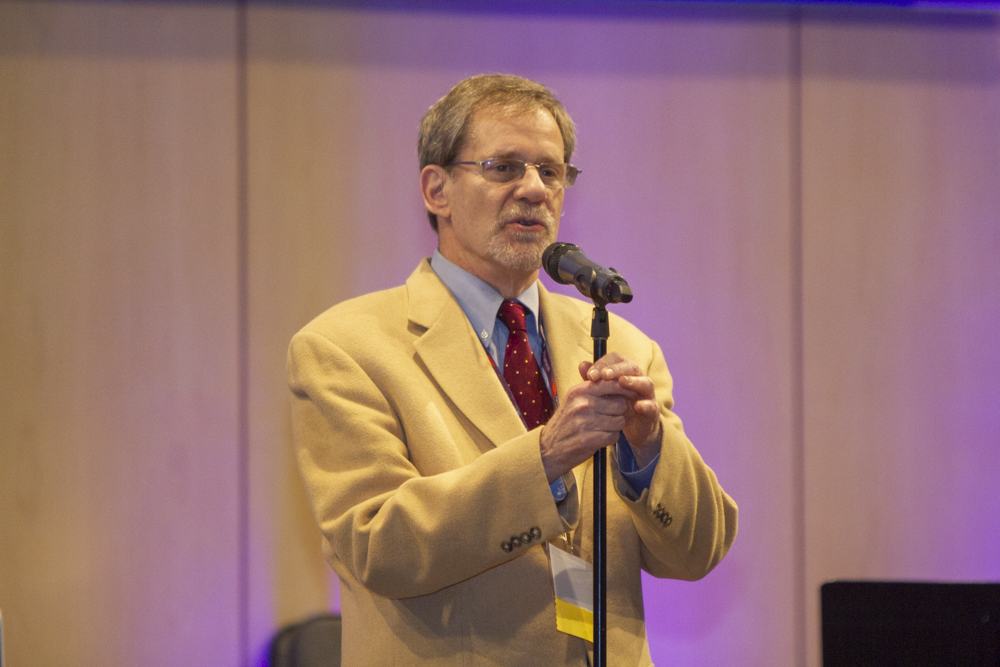
David Raizman at CAA’s 108th Annual Conference in Chicago, speaking at Columbia College, Chicago. Photo: Stacey Rupolo
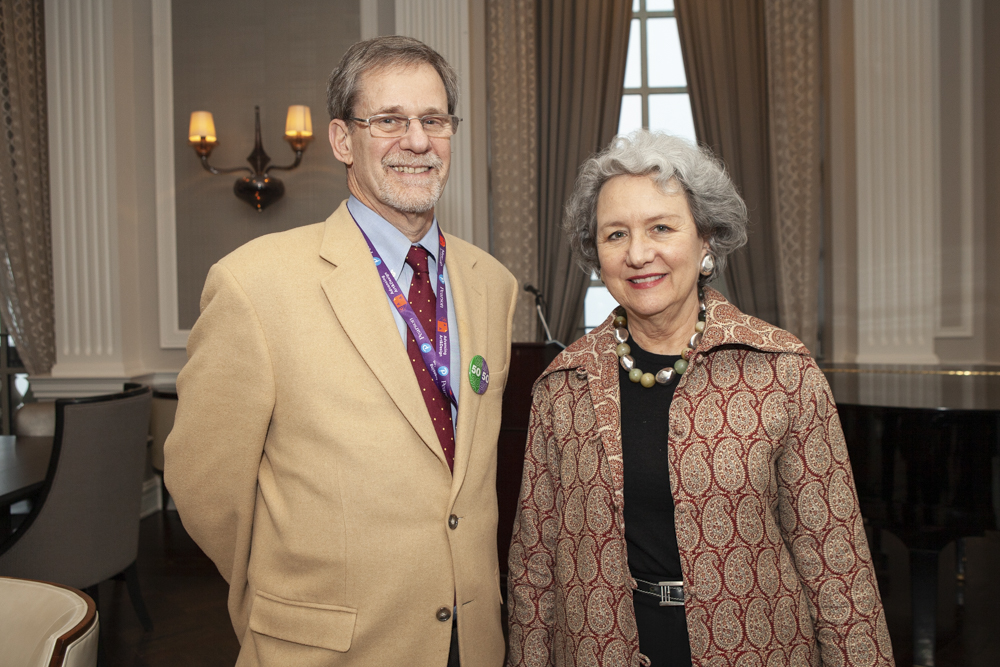
David Raizman and Elizabeth Glassman at CAA’s 108th Annual Conference in Chicago. Photo: Stacey Rupolo
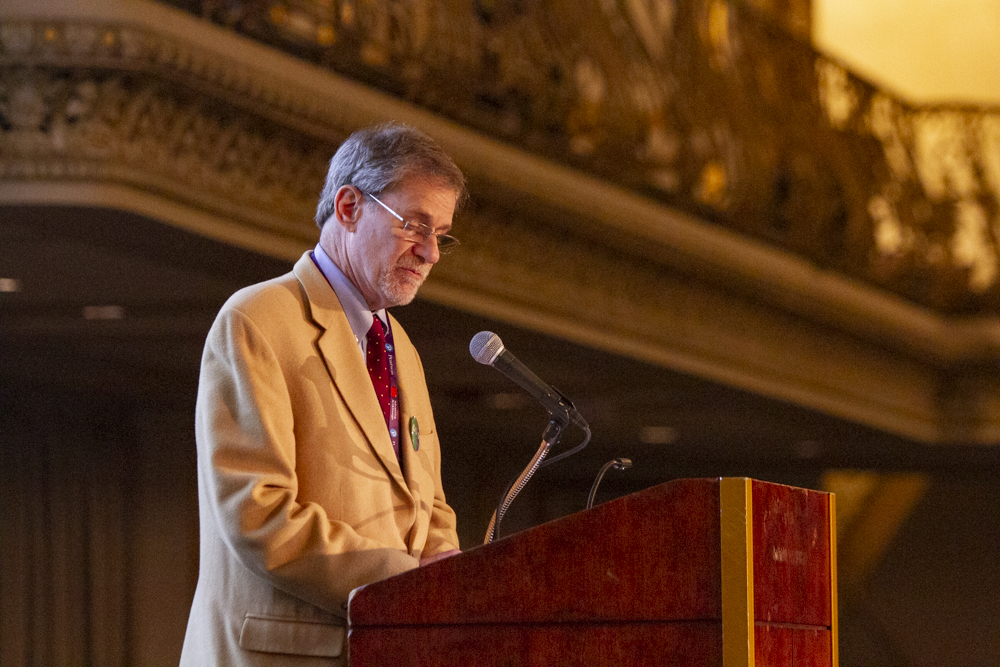
David Raizman presenting Convocation at CAA’s 108th Annual Conference in Chicago. Photo: Stacey Rupolo
David Raizman (1951–2021)
posted by Allison Walters — Feb 25, 2021

David Raizman speaks at CAA’s 108th Annual Conference in Chicago at Columbia College Chicago. Photo: Stacey Rupolo
The CAA Board of Directors and staff wish to express our profound sorrow at the passing of David Raizman. We are deeply grateful that he was part of our lives. During his time at CAA as interim executive director, treasurer, and member of the board, we had the privilege to witness firsthand what an exceptional person he was. His commitment to CAA, leadership acumen, generosity of spirit, scholarship, and, most important, his great kindness lifted all who had the good fortune to know and work with him. He is and will be truly missed.
David Seth Raizman, a historian of medieval Spain and modern design, died on Monday, February 22, 2021, in Abington, Pennsylvania. He was 69. An esteemed scholar and educator, he was also widely admired as an unusually kind and generous colleague and an all-around mensch.
Raizman earned his AB (1973), MA (1975), and PhD (1980) in art history at the University of Pittsburgh. He wrote his dissertation, “The Later Morgan Beatus (M.429) and Late Romanesque illumination in Spain,” under the direction of the late medievalist John Williams. The two became lifelong friends, and Raizman made a point of visiting Williams nearly every time he traveled to Pittsburgh over the next 35 years, until Williams’s death in 2015.
Raizman married his beloved wife Lucy (Salem) in 1974. After completing his dissertation, Raizman accepted a tenure-track position at Western Illinois University in Macomb, Illinois, in 1980. In 1989, the by-then family of four returned to their home state of Pennsylvania when Raizman accepted a position at Drexel University in Philadelphia. Raizman retired from Drexel’s Antoinette Westphal College of Media Arts and Design as a Distinguished University Professor in 2017.
Raizman initially specialized in medieval Spanish manuscripts, and he continued to publish occasional articles on medieval Spanish topics into the mid-2000s. However, a second and arguably more significant chapter in his scholarly career began in the 1990s, after he agreed to teach a course on the history of modern design at the request of Drexel’s design faculty. He taught the first iteration of his combined history of graphic design, industrial design, and decorative arts course in 1992. After struggling to find a suitable textbook to assign his students, he decided to write his own. Raizman published the first edition of History of Modern Design in 2003 and a second edition in 2010. It is now a standard text in design history courses around the world. Raizman was preparing the third edition at the time of his death.
Teaching design history and writing History of Modern Design proved formative events in Raizman’s career. During the last two decades of his life, he worked tirelessly to help advance the field of design history in the United States. He became a stalwart member of the College Art Association (CAA) affiliated society Design Studies Forum, organized design history sessions at CAA conferences, and organized and presented in sessions about design history at three consecutive National Association of Schools of Art and Design (NASAD) annual meetings in the 2010s. He coedited Objects, Audiences, and Literatures (2007) with Carma Gorman; he coedited Expanding Nationalisms at World’s Fairs (2017) with Ethan Robey; and, most recently, he wrote Reading Graphic Design History: Image, Text, and Context (2020), a collection of essays on seven oft-misunderstood items in the graphic design history canon. He regularly published articles, book reviews, and entries in reference works on topics ranging from nineteenth-century World’s Fair presentation furniture to mid-twentieth-century aluminum chairs to twenty-first-century “DesignArt.” And he mentored many emerging scholars in the field of design history, most notably by organizing and leading a month-long National Endowment for the Humanities summer institute with Carma Gorman at Drexel University in July 2015.
In addition to contributing to the fields of art history and design history as a scholar, Raizman shouldered major service roles at his university and in national scholarly organizations. At Drexel, he chaired two departments for a total of ten years and served twice as associate dean and twice as interim dean of his college. At the national level, even after his shift in scholarly focus from medieval art to modern design, Raizman served as treasurer of the International Center of Medieval Art (ICMA) from 2015 to 2018. In that role, he led the organization to adopt a socially responsible investment model that realigned ICMA’s financial profile with its intellectual commitments. When CAA announced later in 2018 that it was seeking a new treasurer, Raizman once again volunteered his services. And in 2019, when CAA sought an interim executive director, Raizman agreed to take on that role, but only on the condition that CAA not pay him a salary. Commuting from Philadelphia every other week to his shared apartment in New York, he held the post of interim executive director as a full-time, unpaid volunteer for nine months in 2019–20. Those who worked with him in the CAA office and on the CAA board during that time often noted his patience, kindness, and diplomacy as he helped guide the organization through a period of transition. After the hiring of executive director Meme Omogbai in March 2020, Raizman continued on as treasurer, conscientiously presenting his last report to the board just two weeks before he died.
Outside of academe, Raizman was an avid tennis player, a talented bluegrass and blues guitar player, and a passionate sports fan, especially of the Pittsburgh Steelers and the Philadelphia Phillies. He also loved classical music and opera. He doted on his young grandson, enjoyed refinishing furniture, and collected Arts and Crafts ceramics, Art Deco posters, and modern furnishings.
Raizman was preceded in death by his parents, Albert and Adele, and his brother, Richard. He is survived by his wife of 46 years, Lucy Raizman; daughter Rebecca Newman, son-in-law David Newman, and grandson Jacob Orion Newman of Los Angeles; and son Joshua Raizman and daughter-in-law Sommer Mateer of Havertown, PA.
Contributions in David Raizman’s honor and memory may be directed to CAA or the Westphal College of Media Arts and Design at Drexel University.
—Carma Gorman, with kind assistance from David’s daughter, Becky Newman; family friend Ilene Raymond Rush; and colleagues Matthew Bird, Elizabeth Guffey, Jim Hopfensperger, Jennifer Kaufmann-Buhler, Victoria Pass, Alexa Sand, Gunnar Swanson, and Christopher Wilson.
CAA joins 22 other organizations in signing on to a statement by the American Historical Association
posted by Allison Walters — Feb 24, 2021
CAA joins 22 other organizations in signing on to a statement by the American Historical Association registering concern about a new policy issued by India’s Ministry of Higher Education/Department of Higher Education that “requires Indian scholars and administrators to obtain prior approval from the Ministry of External Affairs if they want to convene online or virtual international conferences, seminars, or trainings.” The AHA states that this policy is likely to “affect a wide range of scholarly exchanges that are critical to the free international expression of ideas” and “strongly maintains that government agencies should not intervene in the content of scholarly exchange.”
Announcing CAA 2021 Annual Conference Support Grantees
posted by Allison Walters — Feb 17, 2021
CAA offers Annual Conference grants supporting international members, students, emerging scholars, practitioners, and artists. This year, we offered support grants to attend the 109th Annual Conference, February 10-13, 2021, virtually.
ANNUAL CONFERENCE CAA MEMBER SUPPORT GRANTS
CAA has awarded a limited number of grants to international members, students, emerging scholars, practitioners, and artists who are CAA members participating in the conference to support their ability to take part in the Annual Conference.
2021 Annual Conference Support Grantees:
- Kristina Davis
- Silas E. Fischer
- Maria Garth
- Keith D. Lee
- Mai Yamaguchi
- Xiaojing Yan
SUPPORT GRANTS FOR ANNUAL CONFERENCE REGISTRATION
CAA has awarded a limited number of grants to cover Annual Conference Registration for CAA 2021 to members in need. Annual Conference registration grants are supported by funds raised by the Presidents Council of CAA and the “Pay it Forward” initiative.
2021 Annual Conference Registration Support CAA Student Member Grantees:
- Nicole Cochrane
- Sophia Maxine Farmer
- Alexa McCarthy
- Andrea Morgan
- Lauren Rosenblum
- Sheri Michelle Schrader
- Christine Suzanne Slobogin
- Mariya Tsaneva
2021 Annual Conference Registration Support CAA Member Grantees:
- Chava Krivchenia
- Claudia Marion Stemberger
- Daniela Naomi Molnar
- Dell Marie Hamilton
- Hong Zeng
- Jasmine Graf
- Roma Madan Soni
- Silvia Massa
- Tania Gutierrez-Monroy
ROYAL TALENS NORTH AMERICA – CAA CONFERENCE REGISTRATION GRANTS
For more than 100 years, Royal Talens has been stimulating creative expression by developing high-quality brands and products that inspire artists throughout the world. We seek to initiate and support efforts to increase cultural equity and inclusion in the arts community. We would like to announce the newly created Royal Talens CAA Cultural Equity Grant to provide support for studio art educators of color residing in the US or Canada to attend the national conference in 2021.
2021 Royal Talens North America – CAA Annual Conference Registration Grantees:
- Massa Lemu, Assistant Prof at Virginia Commonwealth University
- Lizzy Martinez, Instructor at University of Missouri St. Louis
- Kirk Maynard, Adjunct Instructor at Drew University, Madison NJ
Announcing the 2021 Awards for Distinction Recipients
posted by Allison Walters — Feb 10, 2021
Honorees this year include Samella Lewis, Deborah Willis, Kenneth Frampton, and many other scholars, artists, and teachers, including special commendation for service to art historical scholarship to Gillian Malpass.
CAA Annual Conference, February 10-13, 2021
We are pleased to announce the recipients and finalists of the 2021 CAA Awards for Distinction. Among the winners this year is Samella Lewis, recipient of the 2021 Distinguished Artist Award for Lifetime Achievement. She was the first African American to earn a PhD in art history at Ohio State University. Mentored by Elizabeth Catlett and Charles White, Lewis embodied the visual culture of the civil rights movement through her prints. In addition to her studio practice, Lewis advocated African American art by writing for and creating exhibition venues. Her book, African American Art and Artists, originally published in 1978, was updated in subsequent editions and remains an important examination of more than two centuries of Black art and artists in the United States. For decades Lewis was a committed educator and scholar. In addition to her Fulbright, Lewis has been honored with a Charles White Lifetime Award (1993), with a UNICEF Award for the Visual Arts (1995), by being named a Getty Distinguished Scholar (1997), and by being interviewed by the HistoryMakers Archives (2003).

Deb Willis
and
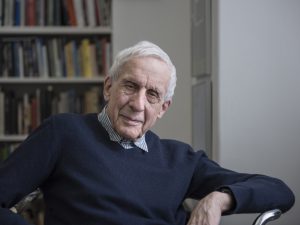
Kenneth Frampton Photo credit: Alex Fradkin
Deborah Willis and Kenneth Frampton are the recipients of the 2021 Distinguished Lifetime Achievement Award for Writing on Art.
Deborah Willis has opened the field of African American photography. When the invention of photography coincided with the promise of abolition, a new arc of aspiration was combined. Its new pictures, thought to be the work of light itself, began to transmit images so that, as Frederick Douglass said, “Men of all conditions may see themselves as others see them.” From the first, photographs and photographic studios proliferated inside the Black community. It is the true extent of this practice that has been revealed by the lifework of Deborah Willis. In effect she has acted as its archaeologist, sifting through the layers from the time of Louis Daguerre to the surface of our present, retrieving the images and researching their histories.
Kenneth Frampton, trained as an architect, is a prolific architectural historian and critic who has managed to face the behemoth of globalized capital with an enduring version of humane modernity. Frampton has been writing about architecture for over half a century. A model of the architect-scholar, Frampton not only opens new cosmopolitan perspectives on the work of widely influential architects from Le Corbusier and Louis Kahn to Zaha Hadid and Álvaro Siza Vieira with his scholarship but also gives due attention to transitional spaces and movements.
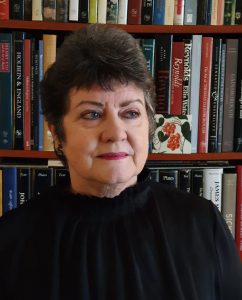
Gillian Malpass
Gillian Malpass is the recipient of a CAA Commendation for Service to Art Historical Scholarship. As publisher of art and architectural history at Yale University Press, London, Gillian Malpass assembled a matchless list of titles over three decades that set the press apart from all others. She fostered projects that were gorgeously designed, accessibly written, and beautifully illustrated, including numerous now-classic books by both emerging and senior scholars. She worked on monographs, exhibition catalogs, reference, and biography, from books examining previously unexplored fields to bestsellers. Authors of many of the most important books published in art history over the past thirty years attest in their prefaces to the ways in which Malpass’s encouragement, expertise, and eye shaped their work.
The Awards for Distinction will be presented during Convocation at the CAA Annual Conference on Wednesday, February 10 at 6:00 PM. This event is free and open to the public. A free and open registration is required.
The full list of 2021 CAA Awards for Distinction Recipients:

Sampada Aranke
Sampada Aranke, “Blackouts and Other Visual Escapes,” Art Journal, vol. 79, no. 4 (Winter 2020): 62–75

Katherine A. Bussard
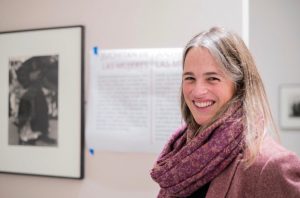
Kristen Gresh Photo credit: Oswaldo Ruiz
Katherine A. Bussard and Kristen Gresh, eds., “Life” Magazine and the Power of Photography, Princeton University Art Museum, 2020
and
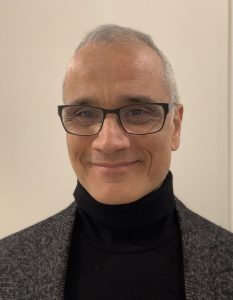
Louis Marchesano
Louis Marchesano, ed., Käthe Kollwitz: Prints, Process, Politics, Getty Research Institute, 2020
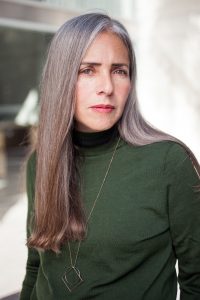
Julieta Gonzalez

Tomás Toledo

Adriano Pedrosa

José Esparza Chong Cuy
Alfred H. Barr Jr. Award for Smaller Museums, Libraries, Collections, and Exhibitions
Adriano Pedrosa, José Esparza Chong Cuy, Julieta González, and Tomás Toledo, Lina Bo Bardi: Habitat, Museu de Arte de São Paulo Assis Chateaubriand (MASP) / DelMonico Books, 2020
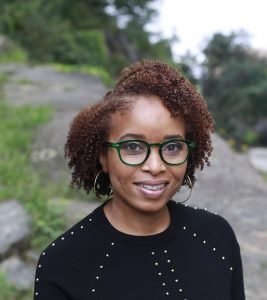
Nicole R. Fleetwood Photo credit: Bayeté Ross Smith
Nicole R. Fleetwood, Marking Time: Art in the Age of Mass Incarceration, Harvard University Press, 2020
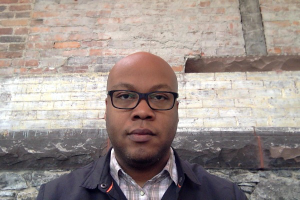
Charles L. Davis, II
Charles Rufus Morey Book Award
Charles L. Davis, II, Building Character: The Racial Politics of Modern Architectural Style, University of Pittsburgh Press, 2019
and

Nicole R. Fleetwood Photo credit: Bayeté Ross Smith
Nicole R. Fleetwood, Marking Time: Art in the Age of Mass Incarceration, Harvard University Press, 2020

Adam Jasienski
Adam Jasienski, “Converting Portraits: Repainting as Art Making in the Early Modern Hispanic World,” The Art Bulletin, vol. 102, no. 1 (March 2020): 7–30
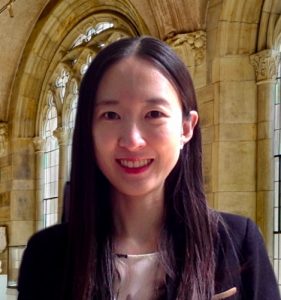
Jessie Park
Honorable Mention:
Jessie Park, “Made by Migrants: Southeast Asian Ivories for Local and Global Markets, ca. 1590–1640,” The Art Bulletin, vol. 102, no. 4 (December 2020): 66–89
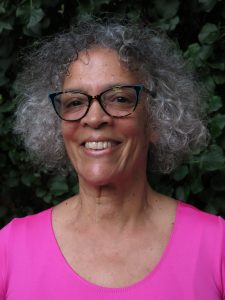
Maren Hassinger Photo credit: Ava Hassinger
Artist Award for a Distinguished Body of Work
Maren Hassinger
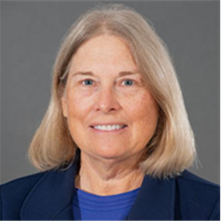
Nancy Odegaard
CAA/AIC Award for Distinction in Scholarship and Conservation
Nancy Odegaard
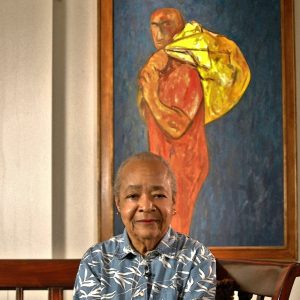
Samella Lewis
Distinguished Artist Award for Lifetime Achievement
Samella Lewis

Deb Willis
and
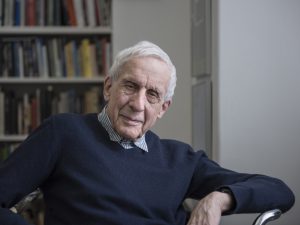
Kenneth Frampton Photo credit: Alex Fradkin
Distinguished Lifetime Achievement Award for Writing on Art
Deborah Willis and Kenneth Frampton
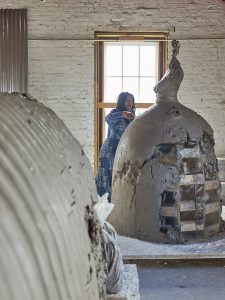
Simone Leigh Photo credit: Kyle Kodel
Distinguished Feminist Award—Artist
Simone Leigh

Katy Deepwell
Distinguished Feminist Award—Scholar
Katy Deepwell
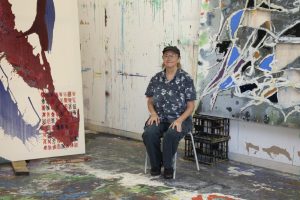
Dona Nelson
Distinguished Teaching of Art Award
Dona Nelson
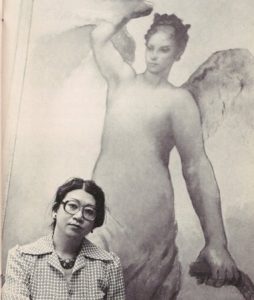
Kaori Kitao
Distinguished Teaching of Art History Award
Kaori Kitao
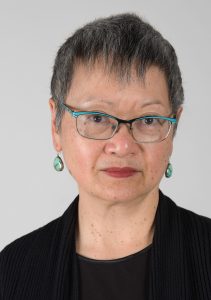
Margo Machida
Margo Machida

Gillian Malpass
CAA Commendation for Service to Art Historical Scholarship
Gillian Malpass
Learn about the juries that select the recipients of the CAA Awards for Distinction.
CAA Advocacy Statement
posted by Allison Walters — Feb 03, 2021
In the past year we have experienced unprecedented changes in the social, economic, and interpersonal landscape: transformations in higher education; financial uncertainty; home-work imbalance; quarantine during a global pandemic; a divisive political climate; the US election cycle; and the Black Lives Matter and #SayHerName protests following the violent killings of Ahmaud Arbery, Breonna Taylor, George Floyd, and so many more. We have seen changes for us as teachers, scholars, makers, writers, and advocates for higher education and the place of academic arts discourse and development in this new world. We have seen great inequities in and serious changes to higher education that have affected faculty, staff, students, and the long-term support of art, art history, and design—as well as changes to our pedagogy, our community, and the very structure of who is cared for and how. We have suffered enormous losses and continue to mourn. These losses have had an immense impact on all of us, including underserved BIPOC communities, adjunct faculty, and arts communities unaffiliated with institutions. Significantly, this time has affected our greatest assets: connecting to, sharing with, and knowing our community.
How CAA offers service and support to our members has also changed as we work to become more inclusive, more diverse, and more equitable in the community at large. However, because so much of 2020 was spent “coping with” and “adjusting to,” we haven’t had the time to pause and reflect. We wonder what the future will look like, and as an organization, how to offer structure and support as we learn and grow together. As part of these changes we have been faced with the hard choice of what to do in the face of adversity. This community of artists, historians, and designers has risen to the moment, adapted, and supported one another. CAA has advocated for you by adapting in its greatest shift ever: to a fully online Annual Conference. Although this has sometimes felt like a pressure point, perhaps it is just a growing pain—and we will continue to show up for community more strongly and profoundly than ever before.
To ensure lasting change, we are committed to the following:
- Expanding on the Annual Conference’s virtual format, becoming ever more accessible and globally inclusive
- Expanding advocacy for underserved and BIPOC communities
- Developing and offering free and open professional resources via collegeart.org
- Increasing access to participation of our global community throughout the year
- Including diverse voices and supporting new outreach and inclusionary initiatives, especially for populations and communities that we have not engaged before: geographically, culturally, and in socioeconomic diversity
- Helping reshape the landscape of professional support via a strategic digital overhaul
- Listening to member concerns and responding with thoughtful urgency, bringing ease to transitions
CAA will continue to regularly address the changing workforce conditions in academic and cultural institutions, including for students and for the trajectory of adjunct faculty; enhance equity, diversity, accessibility, and inclusion initiatives in higher education, including promoting best practices in the reduction of systemic barriers, in faculty and staff hiring, in the support and recruitment of first-generation students from diverse and underrepresented groups, and in the implementation of sound consultative processes involving the affected communities; and increase public awareness and institutional recognition regarding the value and importance of humanities scholarship and visual arts and design education within the academy and beyond it.
CAA, its board, and its staff continue to stand in support of its members and our larger arts community to create, analyze, teach, and promote art within our higher educational and cultural institutions.
Written in solidarity and as affirmation of CAA’s commitment to the diversity of practices and practitioners we serve.
Related resources:
Guidelines from the Professional Practices Committee
Art Journal Winter 2020 Video Abstract, “Now’s the Time,” a message from Jordana Moore Saggese
Art Journal Winter 2020, Blackness Issue (free online until March 31, 2021)
Global Conversations at the 2021 Conference
posted by Allison Walters — Feb 01, 2021

Celebrating Ten Years of the CAA-Getty International Program!
CAA-Getty Global Conversation I: The Migration of Art and Ideas
Live Q&A: Thursday, February 11, 10-10:30 AM
CAA-Getty Global Conversation II: The Climate Crisis, Pandemics, Art, and Scholarship
Live Q&A: Thursday, February 11, 12-12:30 PM
CAA-Getty Global Conversation III: The Challenges, Disobediences and Resistances of Art in the Transnational Imagination
Live Q&A: Friday, February 12, 12-12:30 PM
CAA-Getty Global Conversation IV: Disruptive Pedagogies and the Legacies of Imperialism and Nationalism
Live Q&A: Friday, February 12, 2-2:30 PM
CAA-Getty Global Conversation V: A Multiplicity of Perspectives at the Museum of Modern Art (In conversation with curators at MoMA)
Live Q&A: Saturday, February 13, 10-10:30 AM
See conference schedule for details:
https://caa.confex.com/caa/2021/meetingapp.cgi
CAA signs on to AHA statement condemning the “1776 Report”
posted by Allison Walters — Feb 01, 2021
CAA joins 41 other organizations in signing on to a statement by the American Historical Association (AHA) condemning the report from “The President’s Advisory 1776 Commission.” “Written hastily in one month after two desultory and tendentious ‘hearings,’” the AHA writes, “without any consultation with professional historians of the United States, the report fails to engage a rich and vibrant body of scholarship that has evolved over the last seven decades.”
The just –released “1776 Report” claims that common understanding of the Declaration of Independence and the Constitution can unify all Americans in the love of country. The product of “The President’s Advisory 1776 Commission,” the report focuses on these founding documents in an apparent attempt to reject recent efforts to understand the multiple ways the institution of slavery shaped our nation’s history. The authors call for a form of government indoctrination of American students, and in the process elevate ignorance about the past to a civic virtue.
AHA Condemns Report of Advisory 1776 Commission (January 2021) | AHA (historians.org)
In Memoriam: Robert L. Herbert
posted by Allison Walters — Dec 22, 2020
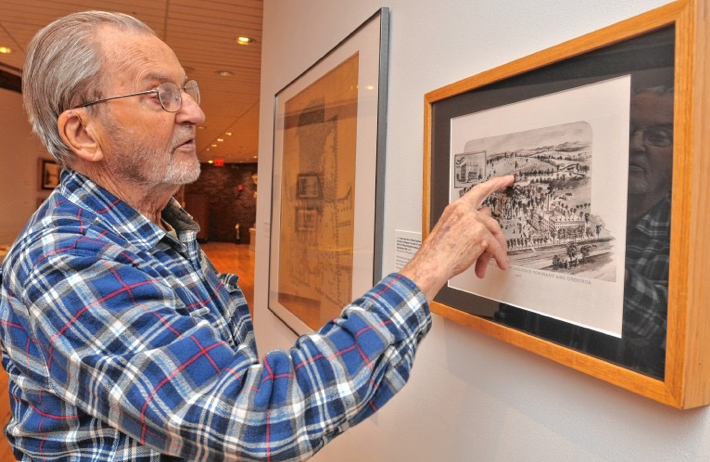
Robert L. Herbert
We are saddened to learn of the passing of Robert L. Herbert, a visionary in art history and extraordinary teacher to many. He received CAA’s Distinguished Lifetime Achievement Award for Writing on Art in 2008. He passed December 17 of a stroke at 91.
Robert L. Herbert
In an extraordinary career spanning more than sixty years, Robert L. Herbert was remarkably consistent in a practice that has come to define the social history of art, which he described as “the moral and passionate … search for what paintings and drawings meant in the artists’ time.”1
As an undergraduate at Wesleyan University in the late 1940s and early 1950s, he was fascinated by the history of science, an interest that encouraged his study of color theory in his dissertation on the nineteenth-century French artist Georges Seurat, completed at Yale University under the direction of George Heard Hamilton in 1957. By that time, Herbert had already been inspired by the work of Meyer Schapiro, who encouraged his lifelong commitment to socialism as a framework for political and intellectual development. Proud of his roots in a working-class New England family, Herbert resisted the formalist bias of his training, although he readily acknowledges a debt to those who taught him to look carefully at works of art and to appreciate the importance of technique and pictorial structure. From the beginning he always insisted that “the stuff of ordinary daily life should enter into art history,” and made it his goal “to restore the flesh of real painters and their culture to the bones of style and form.”
A desire to balance respect for the artist’s distinctive modes of representation with a socially and historically grounded reading of subject matter was a salient feature of Herbert’s research, which focused, for example, not only on the color and facture of paintings by Seurat and other Neoimpressionist artists, but also on the distinctive subject matter and the politics of their art. Recognizing that the prevailing view of Seurat tended to privilege his large-scale paintings, Herbert trained attention on his drawings in a book published in 1963; yet he also continued to explore the meanings of Seurat’s paintings, organizing a major retrospective exhibition on the hundredth anniversary of the artist’s death in 1991 as well as another, Seurat and the Making of “La Grande Jatte,” that was devoted to his most celebrated painting in 2004. In fact, many of Herbert’s most innovative and important contributions to the history of art have been made in the context of exhibitions, which require careful attention to individual objects in addition to the presentation of a unifying conception of the whole. For his first foray into this genre of scholarship, the 1962 exhibition Barbizon Revisited, Herbert wrote a catalogue that won CAA’s Frank Jewett Mather Award and precipitated a renewed appreciation of the work and historical significance of mid-nineteenth-century landscape painters such as Corot, Millet, and Rousseau, among others. His ambition for the exhibition was expressed in terms that convey his dedication to a particular kind of art-historical practice: “The purely historical treatment of art is bloodless. The real heritage of Barbizon art is in the paintings, and their vitality must be experienced in our viscera. Otherwise works of art are documents to be assessed, catalogued, and filed away. But there is a proper use of history, namely, to prod us into discoveries which release our imagination and permit us to rise to the realm of true poesis. An historical evaluation of Barbizon art will only have value if it succeeds in doing just this.”
Just as the study of Seurat’s drawings prompted Herbert to look carefully at Millet’s drawings and other work in articles and exhibitions of the 1960s and 1970s, so Seurat’s paintings eventually led him to the work of Fernand Léger, whom he considers to be Seurat’s descendant and a great practitioner of the craft of painting. Thus although Herbert’s scholarly reputation is bound to his work on nineteenth-century French painters—he has written books on Monet and Renoir, a survey devoted to the leisure subjects of the Impressionists, as well as the publications mentioned above on Seurat, Millet, and the Barbizon School—he has also produced significant scholarship on early-twentieth-century modernism. His first contribution to that field was an edited volume of ten essays, Modern Artists on Art, published in 1964. This was followed twenty years later by a detailed study of the large, diverse collection of European and American modernist art from the Société Anonyme that Katherine Dreier had bequeathed to Yale at midcentury and that Herbert had explored for many years together with his students. Along the way, Herbert developed research he had undertaken as a graduate student into a book, published in 1972, on David’s Brutus and its political significance in the context of the French Revolution; his commitment to the social history of art was also evident in a volume of selected art criticism by John Ruskin that Herbert edited in 1964 and for which he wrote an eloquent introduction that provided a thoroughgoing reevaluation of Ruskin’s significance from a variety of perspectives, demonstrating his acute relevance to the social history of art that Herbert was in the process of articulating at the time.
It is impossible to summarize Herbert’s contributions to art history simply in terms of his scholarly production, impressive as that output has been. He has also been an inspiring teacher of undergraduate and graduate students, setting an example in countless ways that go well beyond his commitment to scrutinizing original works of art alongside archival resources of the most diverse kinds. In addition to imparting these indispensable staples of the trade, he maintained an extraordinary level of personal and professional engagement with his students, loyally supporting their ambitions and celebrating their achievements, whether large or small. Refusing to be impressed by conventional measures of status, in 1990 he acted on his commitment to feminism by relinquishing his position at Yale in order to join his wife, Eugenia Herbert—whom he has always described as his greatest intellectual companion—on the faculty of Mount Holyoke College.
As professor emeritus and living in South Hadley, Massachusetts, he discovered a passionate interest in the life and work of a mid-nineteenth-century female botanist and illustrator named Orra White Hitchcock. “I’ve taken the plunge,” Herbert has remarked, “into the world of American women’s diaries, into travel diaries, and into the history of geology and the natural sciences, embraced in the broader spectrum of American social and cultural history of the middle third of the nineteenth century. It’s a new world for me, and I have no regrets at giving up French art history!” Subsequently he turned to exploring the history of Mount Holyoke and curated several exhibitions with James Gehrt and Aaron Miller.
He died December 17 of a stroke at 91 and is survived by his wife of 67 years Eugenia (Fi); children, Tim, Rosie, and Cathy; their mates, Mara, John and Chris; six grandchildren, and a wealth of friends to whom he was immensely devoted as well.


